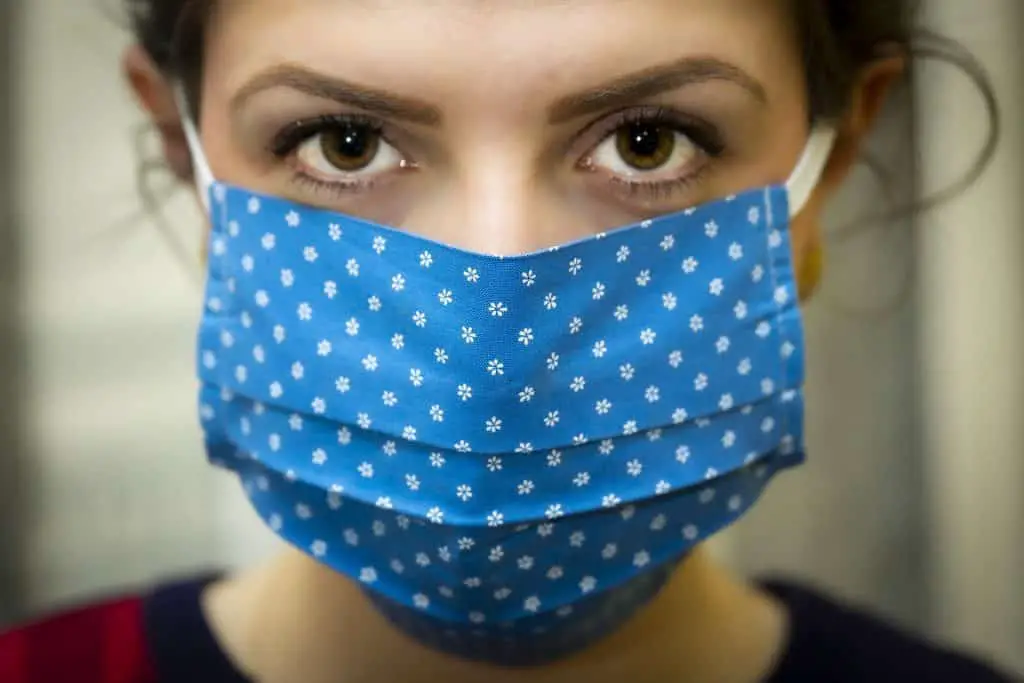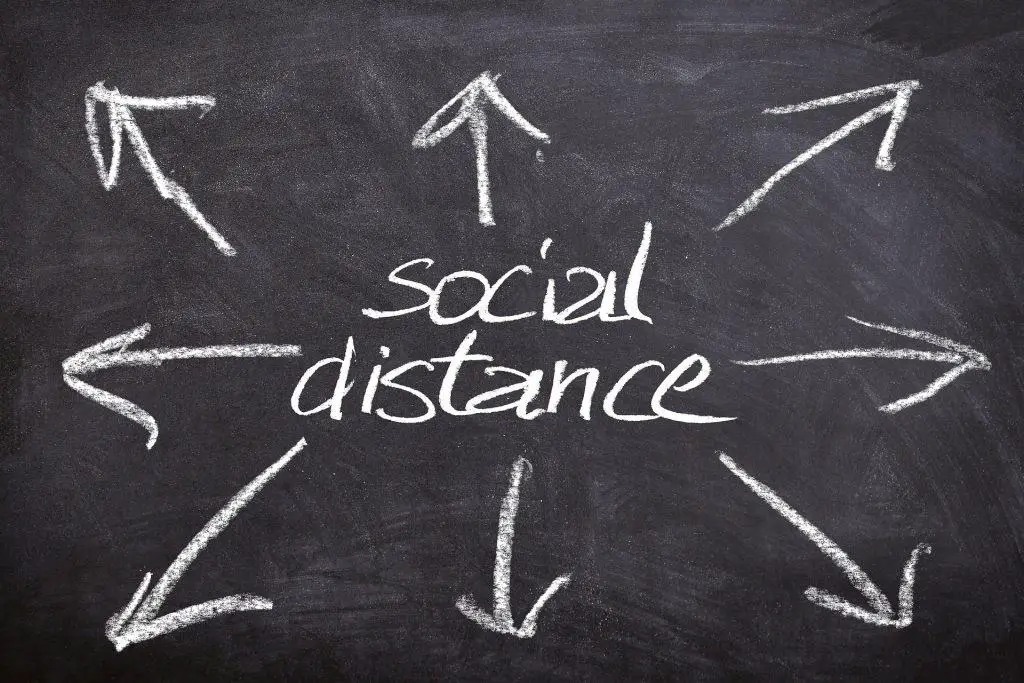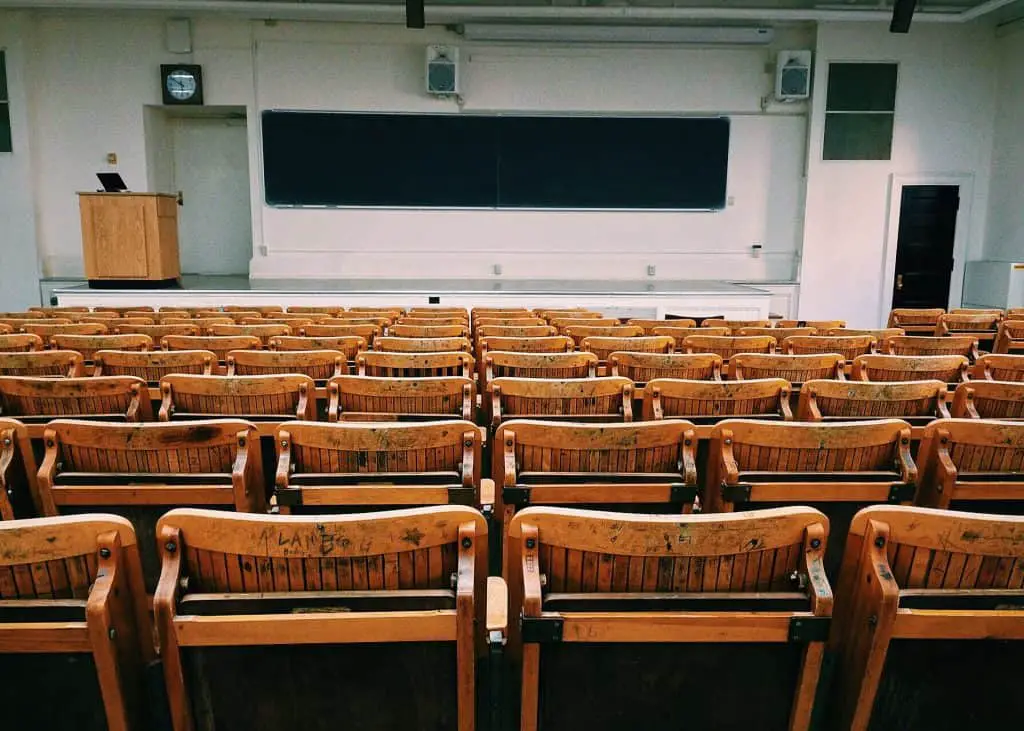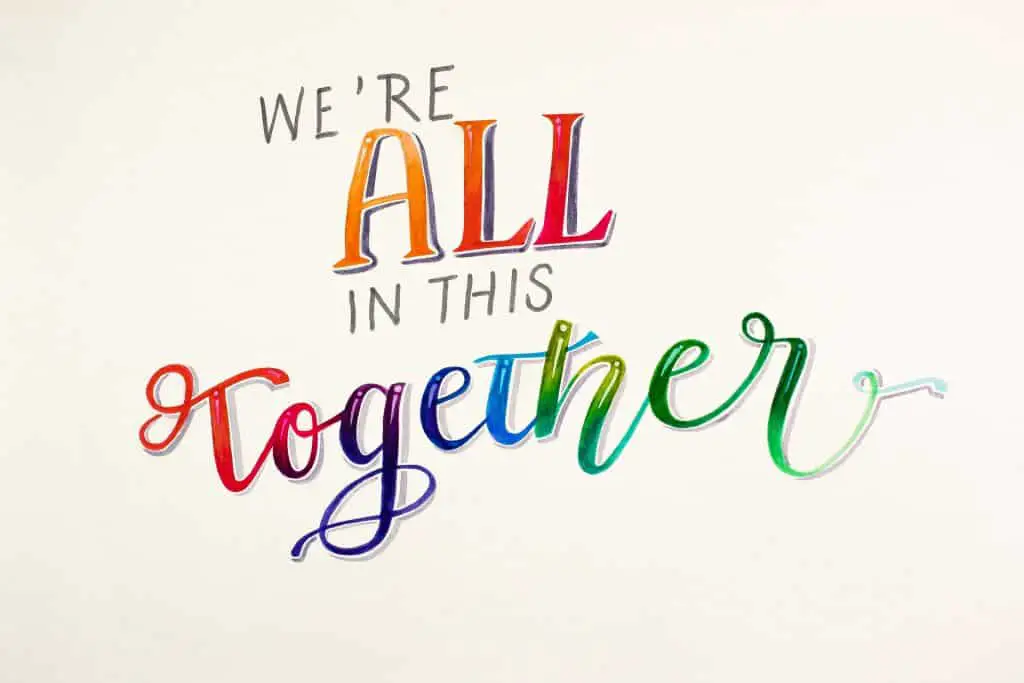In March 2020, all sectors of business and life in the United States and around the world were disrupted. COVID-19 abruptly and consistently changed how we all conduct our day-to-day lives, and this was certainly felt on college campuses around the world. Suddenly, the traditional college experience took a backseat to online learning as campuses closed and slowly tried to figure out how to move forward. So, how has COVID-19 impacted college students?
COVID-19 has impacted college students by removing the option to attend classes on campus to a remote learning model. This has caused students to learn to adapt to remote learning. Safety concerns and social distancing have slowly progressed, leaving many colleges unsure how to move forward.
Assessing the effect COVID-19 has had on college life is complex and covers many different factors. With the rise of vaccines, college life is slowly returning to normal but there is still a lot that is unknown on exactly how students and faculty will move forward. This guide will explore all of these different trends and concerns, and will also take a look at how online learning is becoming more popular. Read on to see how the pandemic has reshaped college life.

The Impact of COVID-19 on Universities
In mid-March 2020, the national and global lockdown due to COVID-19 painted a bleak and uncertain future. For the first time in a century, new generations of people had to learn how to cope with and adapt to a global pandemic, and the first move for virtually all sectors and businesses, save essential retailers and healthcare facilities, was to close down.
This included universities across the country where students had to wait for further instructions, and those about to graduate high school were left in the dark about freshmen year in the autumn of that year. Universities eventually worked at models that used social distancing and masks as requirements, but more and more colleges moved to an online, digital format as not to disrupt the 4-year college model for students.
To make matters worse, the financial implications of attending college also came into sharp focus. COVID-19 brought with it a severe global economic downturn, where more and more families across America had to reevaluate the expenses associated with sending their children to college. In some cases, these financial burdens are easing somewhat, but associated costs with college are still a concern.
The 2020-2021 university calendar looked almost 100% online for nearly every college student in the United States. There was just too much risk associated with having students and faculty congregate in closed classroom quarters in addition to housing together in college dorms to say nothing of the social dynamics of college life.
As we approach the 2021-2022 academic year, many students and parents still share these concerns and burdens. In addition to roughly 47% of universities switching to online learning only, and more and more colleges still allowing only single-room-occupancy in dorms that fill quickly, it is easy to feel confused and uncertain on how and when college life will return to normal.
The Rise of Remote Learning
Remote learning or online learning, has been an alternative to college campus life since the dawn of the 21st-century. For the better part of 20 years, online learning has proved to be an available resource for independent college adults that need to balance work with their college studies.
COVID-19 has helped to bring this method to the forefront of higher education, and signs point that this will continue even after the pandemic has dissipated. But as many new college students unfamiliar with online learning discovered, it takes a large measure of responsibility and technical savviness to succeed in the online learning environment.
Opinions on online learning have consistently been divided between scholars. Some defend the stance that it promotes too many distractions and moments of procrastination, and others feel it is indeed a wave of the future. The essential key detail with online learning is that students must be motivated and responsible to engage with the material, and hand-holding is not going to be found in online learning.
But if done correctly, it would be biased and illogical to say that online learning is somehow less than person-to-person learning. Almost every university in the nation, including Ivy League schools, has at least some courses available in an online option.
COVID-19 removed the option to choose for nearly half of the nation’s universities. It can be said that distance learning became a saving grace at a time when higher education experienced its largest disruption we have ever known. But with this in mind, it does remove the classic college experience, especially for freshmen.

COVID-19 and College Safety
In addition to the disruptions the pandemic has caused, there are also the safety concerns associated with COVID-19 and college life. This is all for good reason since over 700,000 students and faculty across the nation contracted the coronavirus since the start of the pandemic. That is a staggering number.
The pandemic has shown that as long as it is raging, campus life will be disrupted but thankfully, there have been major pushes for safety and of course, vaccinations to ensure a future return to normal is possible. Let’s take a look at each.
Testing
Before and after the introduction of vaccines, COVID-19 testing was a valuable tool in preventing widespread infections. Testing is a way of promoting those infected with coronavirus to self-isolate to avoid passing the pathogens to others in close quarters.
Although testing does nothing to assist an infected individual, it was and is still a great way to use methods such as contact tracing as a way to help previously exposed individuals, and is still used in universities to stop the spread.
Testing is meant to work in a coordinated plan with other preventative measures such as the wearing of masks, social distancing, and can still prove to be an essential service in conjunction with the rise of vaccinations.
Social Distancing
In the fall of 2020, many universities decided to try and open campuses back up with strict rules favoring social distancing at 6 feet intervals between students and faculty as well as the wearing of masks. Both of these two preventative measures can prevent the spread of the virus through breathing and droplets from coughing or sneezing of infected individuals.
Even with the rise of vaccinations, there are still new variants of the virus that mutate and spread, therefore, wearing a mask and keeping at least 6 feet apart is still one of the best methods to prevent the spread of COVID-19.
Many classrooms were revamped to space sitting areas at this required distance, as well as nearly all areas of a campus where human interaction occurs. For colleges and universities that are expected to see a mix between fully vaccinated and non-vaccinations, measures like social distancing and the wearing of masks can still be implemented to protect those who are vaccinated from possibly being exposed to the virus.

Vaccinations
Throughout 2021, the distribution of COVID-19 vaccines has been widespread and largely successful. These vaccines will provide a complete and different fall semester when compared to the uncertainty that students and faculty faced in the fall of 2020. Pandemics are uncertain situations, and there are still many unknowns concerning the future of COVID-19, but vaccinations are providing a slow but steady return to normalcy.
Vaccinations are by choice, and students and parents should be aware that there will be those who have not taken a vaccine. Most colleges and universities are establishing their specific protocols in how to address this, but current data shows that there is a certainty that vaccinations can help people avoid contracting the virus. But still, with new variants of the virus still possible, some precautions are wise.
Will Vaccines Return Colleges to Normal?
It is impossible to predict the end of something as complex and contagious as a viral pandemic. Scientists prefer to remain optimistic but cautious, idealistic but also pragmatic about these situations.
The COVID-19 vaccines are showing that the formulations are protecting individuals, but the virus is still spread across the world, it’s too early to predict its future, and new variants of the virus have occurred.
A so-called return to normalcy is largely based upon overall recommendations and insights put out by the Centers for Disease Control and Prevention, as well as the federal government, state and local governments, and university governing bodies that typically follow advice and protocols at the local and state level.
Therefore, this is a question of what trends show of what could happen and what a specific university and government officials confirm can happen. The data shows that vaccinations can protect individuals and thus a group collective from the virus, but as mentioned before, these vaccines are optional.
Until then, we wait to see how the future unfolds and follow the guidance given by specific universities.

Is Distance Learning a Good Alternative?
Many college students have now been exposed to the online learning environment and although opinions are mixed on its format, it has proven to be effective. With online learning, there are primarily two styles widely used: synchronous and asynchronous.
Synchronous online learning follows a closely programmed schedule most representative of what a student’s schedule would be like on campus. Classes are timed to meet at certain times of the day, assignments have specific due dates, and typically, professors and students will exist with one another in real-time via video conferencing for lectures and real-time discussions.
Asynchronous distance learning is more geared towards working professionals attending college. This hybrid prioritizes personal responsibility and is usually divided into modules or weeks that contain all the reading activities that need to be done, written or video instructor lectures, discussion forums with required postings and deadlines taking the place of real-time discussions, and weekly due dates for assignments (usually every Sunday before midnight).
The pandemic has seen a rise in both types of online learning, and both hybrids have both positive and negative attributes depending on the student. It must be said that this system of learning goes hand-in-hand with the Digital Revolution we all find ourselves living in. Many students now prefer the method, and it can be said that we will likely see more and more colleges began to offer online learning as an option.
But is online learning a good alternative?
One of the primary benefits of online learning is the reduction in costs that it saves both students and parents. Gone are the fees associated with housing, meal plans, parking, social organizations, etc. You will still have to pay for your courses and textbooks, but that is largely the only cost associated with attending college online.

Some students also enjoy a remote interaction or even an asynchronous system that allows them to learn the material, demonstrate their mastery of the concepts, and receive their degree in the time that works best for them. Deadlines and due dates still must be met, but this type of online learning allows more freedom with time and is highly attractive to students who must work during college.
With synchronous distance learning, the only thing missing is that students are not on campus, but there are some concerns with the asynchronous learning model. One primary concern is that the rigidity and structure of the college experience are lost with this format. Students can log into their course at 3 AM and create a discussion post or interact with the material while they are occupied with something else.
The intimacy and structure of the classroom dynamic are gone, and there are no professors to redirect a student’s attention. There are strict plagiarism checking tools in place in most asynchronous systems, so cheating is not allowed to persist and students earn their degree, but this is a model that completely rests the mastery of the material on a student’s schedule.
Either model ensures that a student must achieve the grades capable of doing so to pass. But for many people, it is the lack of campus life that brings about some regret, but this is largely a decision of the student and evidence is pointing more towards the ability to choose. May colleges will also make it easy for a student who wishes to move from either online learning or campus instruction and vice versa.
How Has COVID-19 Affected College Freshmen?
Of all the college students affected by the pandemic, it has been a truly unfortunate experience for those entering college during this time. In a recent study conducted by the AACU, many college students, particularly freshmen, have reported that they feel that their college experience has been ruined permanently.
Anxiety, depression, financial worries, and even suicide have been reported since the global lockdown, and for college freshmen, these concerns are likely associated with the fact that they feel as if they will never get to live an authentic college freshmen experience.
Some parents have persuaded their recent high school graduates to put college off until the pandemic subsides, but this is still a largely unknown and disconcerting feeling for freshmen. For college students who entered their freshman year in the fall of 2020, there is a loss there, but focusing on the real agenda of college is the key to overcoming a sense of loss in this respect.
For freshmen planning on attending college in the fall of 2021, there is some hope that at least a sliver of the freshmen experience can be felt. Let’s take a look at some of the experiences that freshmen could be experiencing and some suggestions for overcoming these obstacles.

Emotional Stress and Anxiety
COVID-19 has certainly sent all of us into a tailspin at some point during its spread. All the financial concerns, risks of infection, time spent indoors, loss of routine, and for some of us, even the loss of a loved one, has caused anxiety and depression rates to skyrocket.
Students feel all of this as well, and this is exacerbated by incoming college freshmen. The first year of college is designed as both an evolution from the high school curriculum and a burgeoning social awakening. It’s an event for many of us, and one of those singular experiences that will only ever happen once.
But life does not always follow a clear-cut design and path, some obstacles will prevent expectations from being fulfilled. For students coping with stress and anxiety, try and provide some helpful but essential advice in how what is happening is a collective experience, and those social experiences they were longing for are now to be found in helping others to stay safe and getting us all back to normal.
Freshman year is just one year out of four.
Loss of Experience
The traditional college freshmen experience last occurred in the fall of 2019. There are hopes that autumn 2021 can return to some of that but we still have a ways to go with this virus. Many universities are returning to as much of that normalcy as possible, and the more that infection rates go down, the sooner it will arrive.
There will certainly be more normalcy than what was seen in the fall of 2020, but maintaining public safety should be everyone’s top priority within a campus setting.
Uncertainty
Additionally, college students of every grade are experiencing a great deal of uncertainty. Uncertainty about the virus or variants, safety concerns, the country’s economic state, and a future job market, the list goes on and on.
For college freshmen, these concerns are colliding with the general sense of nervousness and uncertainty that many college freshmen feel. It can help incoming freshmen to focus on the positive aspects of the news stemming from the pandemic. The efficacy and effectiveness of vaccines, how more and more states are reopening, and how all of this can positively affect the nation’s overall economy.
Existential angst is likely also a concern for incoming college freshmen. Try and help alleviate a freshmen’s focusing on the trials and tribulations of the pandemic leading to a bleak and uncertain view of the world and even the future. Pandemics are rare in history and have long spans in between, and the economy has gone downwards only to recover many times before.
Loss of College Interest
Many incoming freshmen are even expressing a desire to avoid college altogether as they feel that the problems associated with the pandemic are too complex. Even with online learning, a college education is showing its importance in a rapidly evolving workforce. Students should never give up on attaining a college degree. If safety concerns are causing your child concerns, explain how online learning can still provide an essential college education.

The Future Impact of COVID-19 on University Life
The COVID-19 pandemic is still spread across the globe but there are signs of progress thanks to the widespread vaccination efforts to diminish it. In the fall of 2021, more and more universities are announcing a return to campus life with safety protocols and precautions still a priority.
With this news, it can be said that colleges across the country are working to bring back as much of the traditional college experience as possible, and vaccinations are leading the way in making campuses safe enough to do so. The future is looking bright for universities, and it will be interesting to see if normalcy will return 100% in the fall of 2022.
Summary
In summary, the COVID-19 pandemic disrupted colleges and universities unlike any time in modern history. So many students and faculty were affected, and online learning was truly a useful methodology during this time and continues to be.
As vaccines designed to diminish the virus continue to produce promising numbers, colleges and universities can slowly but surely continue getting to the point where normalcy can return, and future college freshmen can experience their introductory year as it always was before the virus brought the world to its knees.
